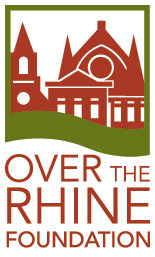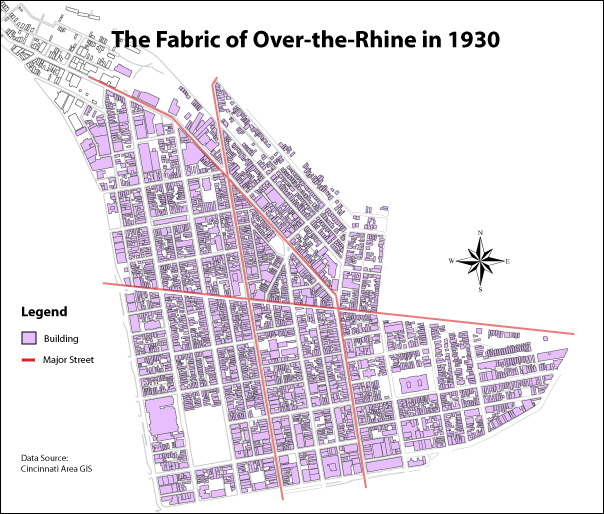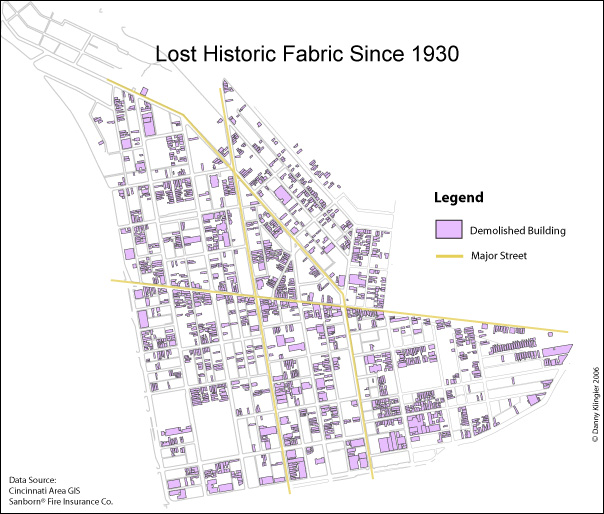

OTR News & Events
Quick Links |
Historic PreservationIn 2006, Over-the-Rhine was placed on the National Trust for Historic Preservation’s list of the “Eleven Most Endangered Historic Places in America." OTR made the list for two reasons: its national significance and its threat of destruction. OTR’s National SignificanceThe neighborhood’s 360 acres is one of the largest, most intact, nineteenth century urban historic districts in the United States and is believed to contain the nation’s largest contiguous collection of nineteenth century Italianate Architecture. OTR’s dense streetscapes are full of tenements, churches, theatres, storefronts and social halls that are largely unchanged from a time when they were inhabited by working-class immigrants in the 1800s. Similar neighborhoods are extremely rare and can only be found in very few other cities. Over-the-Rhine is home to the nation’s first large concert hall (Music Hall on Elm St.), as well as the nation’s first “Turnhalle” (public gymnasium) and first German Methodist church. It was once home to Levi Coffin and his Underground Railroad operation, Harriet Beecher Stowe was an OTR resident before she wrote Uncle Tom’s Cabin and throughout its history, the neighborhood has been home to an impressive and eclectic array of authors, artists, and political figures. Most American historic districts have been spared because of their impressive collections of mansions or unique architecture. OTR is significant for essentially the opposite reason. To this day, its sense of place is that of a working class, immigrant neighborhood. In the 1800s, wealthy beer barons lived across the street from their breweries and adjacent to their laborers. OTR’s building stock reflects this diversity of socio-economic classes and mix of uses. We believe that OTR may contain more intact nineteenth century brewery buildings than any other city in America. Over-the-Rhine was once one of America’s most densely populated neighborhoods (reportedly more densely populated than Manhattan during parts of the 1800s) and served as the first American home to tens of thousands of European immigrants. Although the neighborhood was extremely diverse, it was also home to a nationally unprecedented number of Germanic immigrants. Its magnificent public tenement stock; its rich brewing heritage; and its critical role in German-American history and nineteenth century immigration all make it a place of national significance. During a visit in 1995, Arthur Frommer of Frommer’s travel guides fame, remarked that “in all of America, there is no more promising an urban area for revitalization than your own Over-the-Rhine….I see in my mind the possibility of a revived district that literally could rival similar prosperous and heavily visited areas.” OTR’s Imminent Threat of DestructionCincinnati is a very historic city with an extraordinary number of historic places on the National Register. It has more such buildings than New Orleans and can boast that OTR is larger than Charleston’s world-renowned historic district. Unlike these cities, though, Cincinnati has not capitalized on its historic assets. In fact, we have let many of these assets become an albatross: historic buildings throughout Over-the-Rhine sit vacant and derelict, deteriorating over years of neglect. Unfortunately, our approach to this dilemma has been standardized and reactionary: demolition. Over-the-Rhine is still one of America’s most historically significant neighborhoods, but it is at a tipping point. We have recently calculated that OTR is only four demolitions away from passing 50% destruction of its historic building stock! We either need to change policy and start taking historic preservation seriously or concede the loss of one of Cincinnati’s most valuable potential assets and one of America’s most significant historic neighborhoods. As the maps below illustrate, the level of demolition of historic properties in OTR has been dramatic over the past several decades. Since 1930, approximately half of the building stock has been removed, most of it by city-sponsored demolition.
maps courtesy of Danny Klingler, OTR Foundation Board Member While earlier decades saw widespread razing of blocks and streetscapes, recent years have brought a new, equally insidious phenomenon: demolition by neglect. As poverty rates and disinvestment grew in Over-the-Rhine, buildings were increasingly abandoned and gradually deteriorated. Today, many buildings stand vacant and in dire need of repair, yet building owners remain unwilling to bring their properties up to code. Once buildings reach a critical stage of dilapidation, they are deemed a danger to the public and are slated for “emergency demolition” by the city. These “emergency” demolitions – the result of years of neglect -- are cutting wide, vacant swaths in the remaining fabric of OTR. Between 2001 and 2006, over 50 historic buildings were demolished in such a manner. In the first four years after the National Trust’s 2006 designation of OTR as one of America’s most endangered places, 20 historic properties have been demolished, and the destruction continues. Meanwhile, dozens more are condemned and in immediate risk of destruction. Even stable buildings are not safe. Solvent owners continue to seek demolitions as a preferred approach to neglected properties and some purchase developable historic properties with the intent of razing them for mere convenience. What is Over-the-Rhine Foundation Doing and How Can You Help?The Over-the-Rhine Foundation is working to Preserve, Protect, and Celebrate Cincinnati’s most historic neighborhood. In collaboration with other organizations, community leaders and advocates, we engage in a number of activities to carry out our mission such as:
The National Park Service has written a series of informational Preservation Briefs, designed to assist with the preservation, rehabilitation and restoration of historic buildings. We encourage property owners in OTR to familiarize themselves with the Briefs. From NPS.gov: These NPS Publications help historic building owners recognize and resolve common problems prior to work. The briefs are especially useful to Historic Preservation Tax Incentives Program applicants because they recommend methods and approaches for rehabilitating historic buildings that are consistent with their historic character. |

